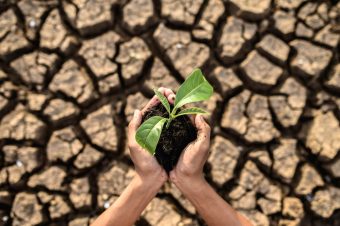For thousands of years, during a period of climate stability and resilience of the Earth’s system, humanity has been able to advance in technological and cultural development. A report published by scientists from the Potsdam Institute for Climate Impact Research (PIK), which deals with the health of planet Earth, has shown that we have entered a new era. This period is marked by increasingly evident symptoms of exceeding the Planetary Boundaries, which include more frequent extreme weather events, wildfires, reduced plant productivity, and water shortages. These problems are further exacerbated by the growth of the global population.
Planetary Boundaries represent a scientific framework that defines safe limits within which human activities can occur without significant consequences for the stability of the Earth’s system. If they are crossed, it leads to the potential destabilization of ecosystems and all life conditions. There are nine Planetary Boundaries, including climate change, biosphere integrity, land-system change, freshwater use, biochemical flows, introduction of novel entities, ocean acidification, atmospheric aerosol loading, and stratospheric ozone depletion.
The report shows that six out of the nine Planetary Boundary processes have crossed safe levels. These processes include climate change, biosphere integrity, land-system change, freshwater use, biochemical flows, and the introduction of novel entities. As stated, these levels show alarming trends.
More:
- How Degraded Are Freshwater Systems – What the United Nations Report Reveals
- Landslide Triggered by Climate Change Caused Earth’s Vibration
- Climate change transforms Pacific Islands

When it comes to climate change, CO2 levels in the atmosphere are at their highest in the last 15 million years, while the average global temperature is higher than ever before in human history, with an accelerated warming trend since the late 20th century. The integrity of the biosphere has also been severely compromised, with the accelerated loss of genetic diversity and functional integrity of ecosystems. The loss of the biosphere threatens the planet’s resilience to other ecological pressures, including climate change and land degradation, the report states. In the context of land-system change, there is a continued decline in forest areas, while many regions are already far beyond safe levels. Changes in freshwater systems, such as rivers and lakes, have led to increased instability in the quantity of water flowing through these systems and in soil moisture. Water resource management is becoming increasingly difficult due to growing uncertainty in water availability. Biogeochemical flows, particularly the use of phosphorus and nitrogen in agriculture, are causing serious ecological problems, including water pollution and the emergence of so-called dead zones in seas and lakes. When it comes to the introduction of novel entities, such as synthetic chemicals and plastics, there is still insufficient research. However, it is believed that many of these substances cause permanent harmful changes in the environment, including soil and water contamination.
The remaining three processes are still within safe operating boundaries. However, ocean acidification is close to a critical threshold, while atmospheric aerosol loading shows progress toward safer levels. The degradation of the ozone layer has slowed down, but the report notes that concerns remain about the persistent challenges in ozone recovery, especially over Antarctica.
Energy portal

